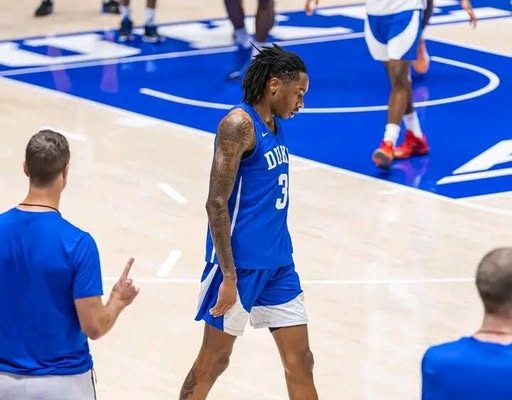In the world of college basketball, where every second counts and every decision can change the course of a game, teams are constantly searching for that elusive edge—the one smart adjustment that could transform a promising roster into a championship contender. For Duke, a program steeped in tradition and rich with history, the 2025 season is shaping up to be a critical juncture. With a mix of talented newcomers, seasoned players, and a coaching staff known for innovation, the Blue Devils possess the raw materials to make a deep tournament run. Yet, as with many elite teams, success often hinges on subtle tweaks rather than wholesale changes. This year, the silent shift that could ignite Duke’s championship aspirations lies not in flashy recruiting or dramatic tactical overhauls, but in a quieter, smarter adjustment that many may overlook until the final buzzer sounds.
At first glance, Duke’s roster appears well-rounded: skilled shooters, versatile defenders, and athletic playmakers who can break down defenses with precision. The coaching staff, led by the ever-adaptive head coach, has instilled a culture of discipline and creativity, balancing traditional sets with the evolving pace-and-space style that modern basketball demands. Despite this, the team’s previous campaigns have been marked by moments of brilliance interrupted by stretches of inconsistency, particularly in defensive cohesion and transition execution. The difference between a good team and a championship team often lies in those fleeting moments—the ability to sustain focus, maintain structural integrity, and execute with surgical precision when the pressure mounts.
The key adjustment Duke needs to make before tip-off revolves around a nuanced but impactful change in their defensive communication and rotation principles. While the team has always emphasized defense, the silent shift entails a strategic upgrade to the way players interact on the floor, shifting from a traditional, call-and-response system to a proactive, anticipatory communication style that enhances team synergy. This is not about changing the defense’s core schemes—whether man-to-man or zone—but about elevating the cognitive connection between players, allowing them to anticipate threats, switch seamlessly, and cover gaps with near-telepathic awareness.
This might sound abstract or subtle, but the impact of enhanced defensive communication is profound. Basketball at the championship level is often decided by a handful of stops, turnovers forced, and contested shots. When defenders are in sync, the entire unit operates like a finely tuned machine, reducing defensive breakdowns that opponents exploit. Moreover, this adjustment frees up the offense by creating more fast-break opportunities from turnovers and rebounds, helping Duke capitalize on their athleticism and transition speed—two of their greatest strengths.
Implementing this silent shift demands several foundational elements. First, the players must embrace an unspoken understanding of their roles in defensive coverage—not just in their individual assignments but in their responsibilities as a collective. This involves rigorous practice drills focused on situational awareness, where players learn to read the offense’s cues and preemptively position themselves to neutralize threats. For example, rather than waiting for a teammate to call out a screen, defenders learn to anticipate it based on positioning and offensive tendencies, allowing them to switch or hedge with greater fluidity.
Second, the team must cultivate a culture of continuous verbal and non-verbal communication that is instinctive rather than reactive. This involves mastering eye contact, subtle gestures, and pre-arranged signals that convey information instantly without disrupting the flow of the game. Coaches often use video sessions to highlight moments where lapses in communication led to costly defensive errors, reinforcing the importance of this mental and physical connection. Over time, these sessions create a mental framework where players operate almost on autopilot, seamlessly coordinating in high-pressure scenarios.
Third, this adjustment requires trust—a foundational ingredient in team sports that transcends talent and strategy. Players must trust their teammates to execute their assignments and trust themselves to make split-second decisions that serve the team’s greater good. This psychological aspect is critical because hesitation or doubt in defensive rotations can create hesitation that opponents readily exploit. Duke’s leadership group, including its upperclassmen and coaching staff, play a pivotal role in fostering this trust through team-building exercises, transparent communication, and consistent reinforcement of the team’s defensive identity.
Beyond the immediate tactical benefits, this silent shift could also create a ripple effect throughout the team’s overall performance. When players gain confidence in their defensive cohesion, it often leads to increased energy and aggressiveness on both ends of the court. This heightened intensity can intimidate opponents, force rushed decisions, and fuel momentum swings—elements that are crucial in the unforgiving environment of March Madness. Furthermore, a defense operating in sync can better protect Duke’s key offensive players by limiting the quality of shots opponents can take, giving the Blue Devils’ scorers more breathing room to operate.
Critically, this adjustment addresses one of Duke’s recurring vulnerabilities: late-game defensive lapses. In previous seasons, the Blue Devils have sometimes struggled to maintain their defensive discipline under the weight of pressure, leading to critical turnovers and missed assignments that swing tightly contested games. By embedding this anticipatory communication system early in the season, Duke can mitigate these risks and develop a resilient defensive mindset that endures until the final possession. This resilience often distinguishes championship teams, who are not just talented but also mentally tough and unflappable in clutch moments.
The beauty of this silent shift is its subtlety. It does not rely on high-profile player additions or complicated new schemes that take months to perfect. Instead, it leverages the existing talent and enhances their effectiveness by refining how they work together as a unit. This kind of smart adjustment is particularly suited for college basketball, where roster turnover is high, and teams often have limited time to gel. By focusing on communication and anticipation, Duke maximizes its current roster’s potential and prepares to meet the challenges of a grueling schedule with greater cohesion.
This adjustment also aligns well with the evolving trends in basketball analytics and player development. Modern basketball places increased emphasis on spatial awareness, quick decision-making, and minimizing defensive errors. Teams that can coordinate rotations efficiently and communicate proactively tend to generate higher defensive efficiency ratings and create more scoring opportunities off turnovers. Duke’s coaching staff, which incorporates data-driven insights into their preparation, recognizes that fostering this communication upgrade could translate into measurable improvements in defensive metrics, which in turn can fuel their championship run.
Furthermore, this silent shift has implications beyond just the defensive end. Offensively, players who trust their teammates defensively often feel more liberated to take calculated risks with the ball, knowing that their team can recover on defense if a play breaks down. This freedom can lead to more dynamic offensive sets, increased creativity, and ultimately higher scoring outputs—key factors in navigating the unpredictable tournament environment where adaptability reigns supreme.
Of course, implementing this adjustment will require patience and discipline from the entire Duke program. It is not a quick fix but a gradual evolution that depends on consistent reinforcement and buy-in from every player and coach. There will inevitably be growing pains as the team adjusts to new communication protocols and anticipates defensive responsibilities more proactively. However, the payoff promises to be worth the effort, as this kind of cohesive defense forms the backbone of championship-winning teams year after year.
In the grand narrative of college basketball, the stories that captivate fans and analysts often center on explosive scoring runs, buzzer-beaters, or headline-grabbing recruits. Yet, the most enduring success stories often rest on less flashy but far more impactful elements—like this silent shift in defensive communication that Duke is poised to embrace. It’s a testament to the idea that sometimes the smartest adjustments happen away from the spotlight, quietly reshaping a team’s identity and unlocking its full potential.
As the 2025 season approaches tip-off, all eyes will be on Duke’s marquee players and tactical innovations. Yet, the real difference-maker might well be this silent shift—the subtle, smart adjustment in how the team communicates and coordinates on defense. If executed with discipline and trust, it could be the spark that propels the Blue Devils past the stiff competition and into the annals of championship lore. In a sport where every possession matters and margins for error are razor-thin, this kind of intelligent, anticipatory defense may be the very edge that defines Duke’s destiny.
Ultimately, championship basketball is about more than talent; it’s about teamwork, resilience, and execution under pressure. Duke’s silent shift—this one smart adjustment in defensive communication—embodies all these qualities. It is an unassuming but powerful change that promises to amplify the Blue Devils’ strengths, mitigate their weaknesses, and elevate their performance when it counts most. If the team can master this evolution before the first tip-off, fans and analysts alike will witness a Duke squad ready not just to compete but to conquer, fueled by a quiet revolution that makes all the difference.



